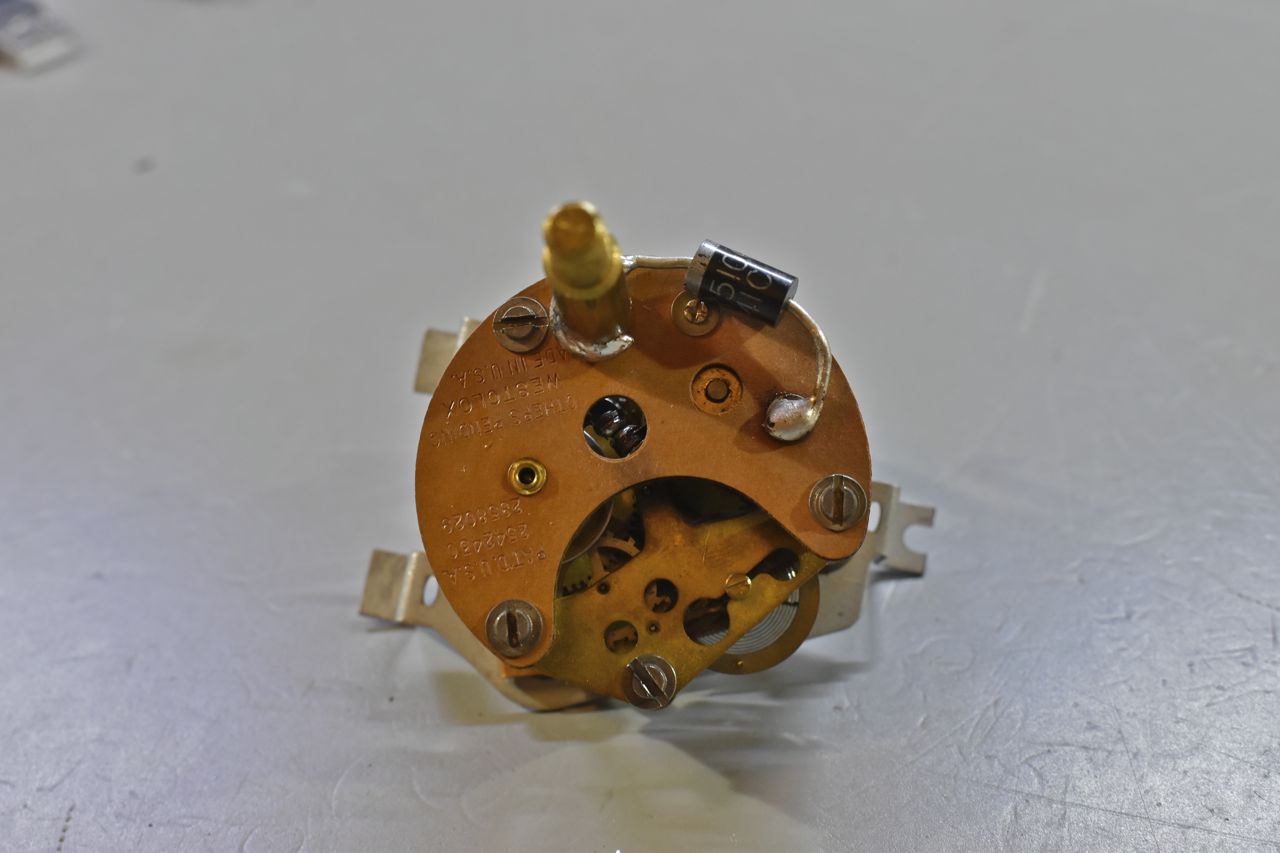1968 Ford XL Repairing Whilst Keeping It Roadworthy : 29 Clock
2023, November 14
1 - 2 - 3 - 4 - 5 - 6 - 7 - 8 - 9 - 10 - 11 - 12 - 13 - 14 - 15 - 16 - 17 - 18 - 19 - 20 - 21 - 22 - 23 - 24 - 25 - 26 - 27 - 28 - 29 - 30 - 31 - 32 - 33 - 34 - 35 - 36 - 37 - 38 - 39 - 40 - 41 - 42 - 43 - 44 - 45 - 46 - 47 - 48 - 49 - 50 - 51 - 52 - 53 - 54 - 55 - 56 - 57 - 58 - 59 - 60 - 61 - 62 - 63 - 64 - 65 - 66 - 67 - 68 - 69 - 70 - 71 - 72 - 73 - 74I thought a change of pace would be nice so I've been working on the clock as well. Here's that. This is a 1968 clock, which is visually a little different than the 1966, but has mostly the same innards.
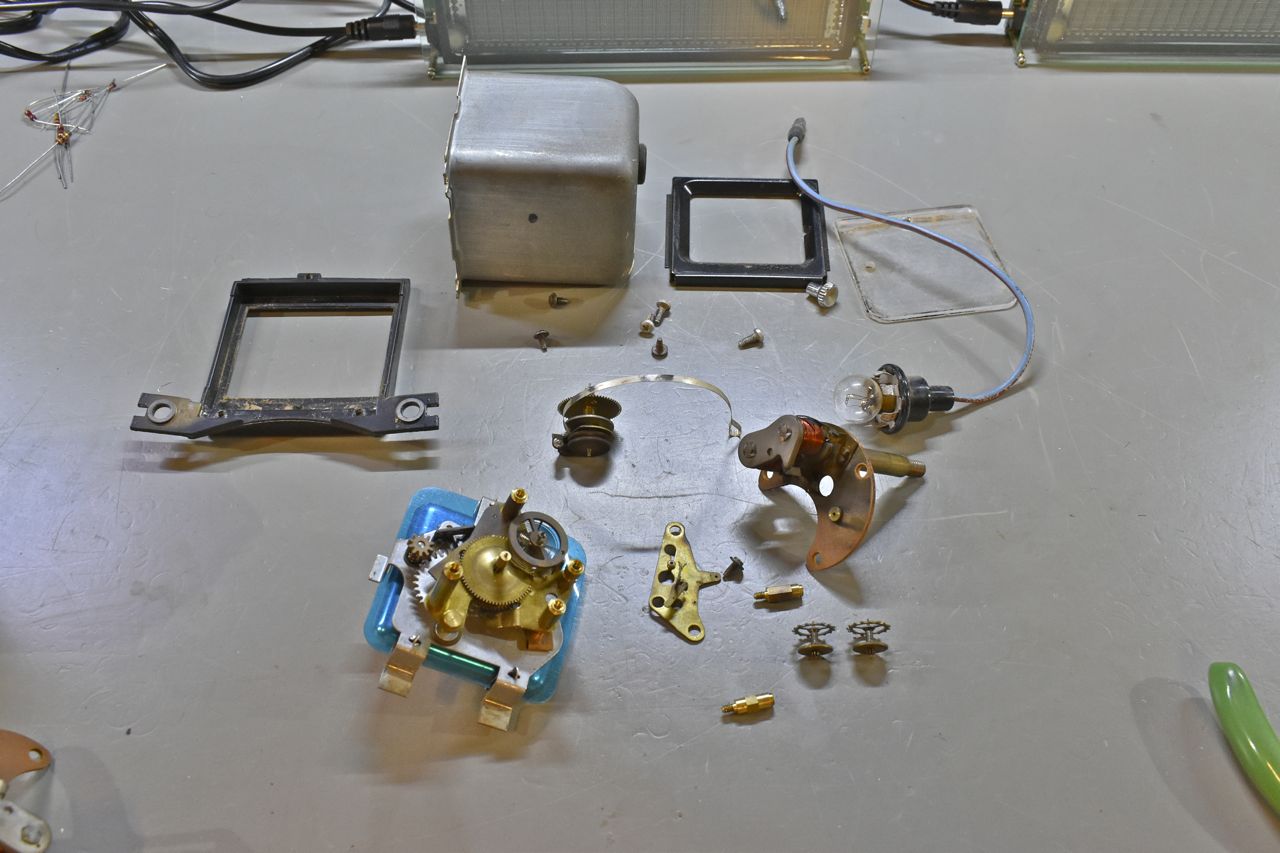
I forgot to take a picture of it before I took it all apart.
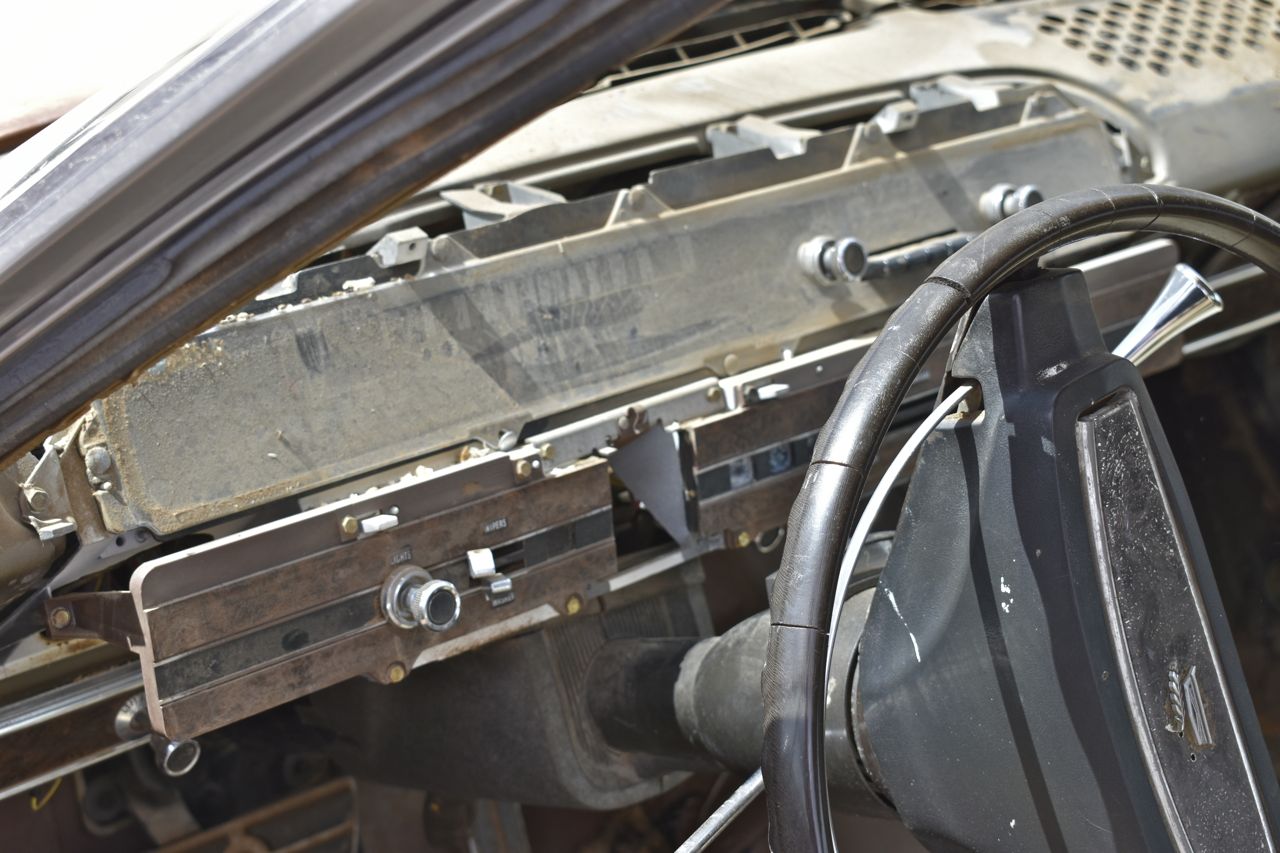
I liberated the clock from this pile. Interestingly it was disconnected when I removed it and I thought that odd.
These clocks are usually just dead, the failure modes I've seen are the points are so worn and sputtered material all over the gear set it seizes the gear set. The points can break from fatigue of getting slapped hard every 20 or seconds on the electric winder. Another failure point is the winder coils self burn up on a low battery. So the coils are meant to be very intermittent, they draw a fair amount of current to produce a strong magnetic field. When you leave the car unattended for long periods or leave a light on and the battery drains, the battery voltage gets to a point where the winder can slap the mainspring to wind it and the coils stay on. Even on reduced battery voltage they burn up.
This clock however had an interesting failure mode. I connected it to the lab supply and it instantly started chattering away and the minute hand was racing around the face. Kind of amusing actually.
The gear that couples the mainspring to the flywheel and hairspring broke the shaft and the gear cocked over and let the mainspring bypass the time keep and it just rocketed the hands around on the electromagnet winder.
The gear set on the bottom are the bad ones. The shaft broke on the left one but it rubbed on the teeth of its mating gear and deformed those.
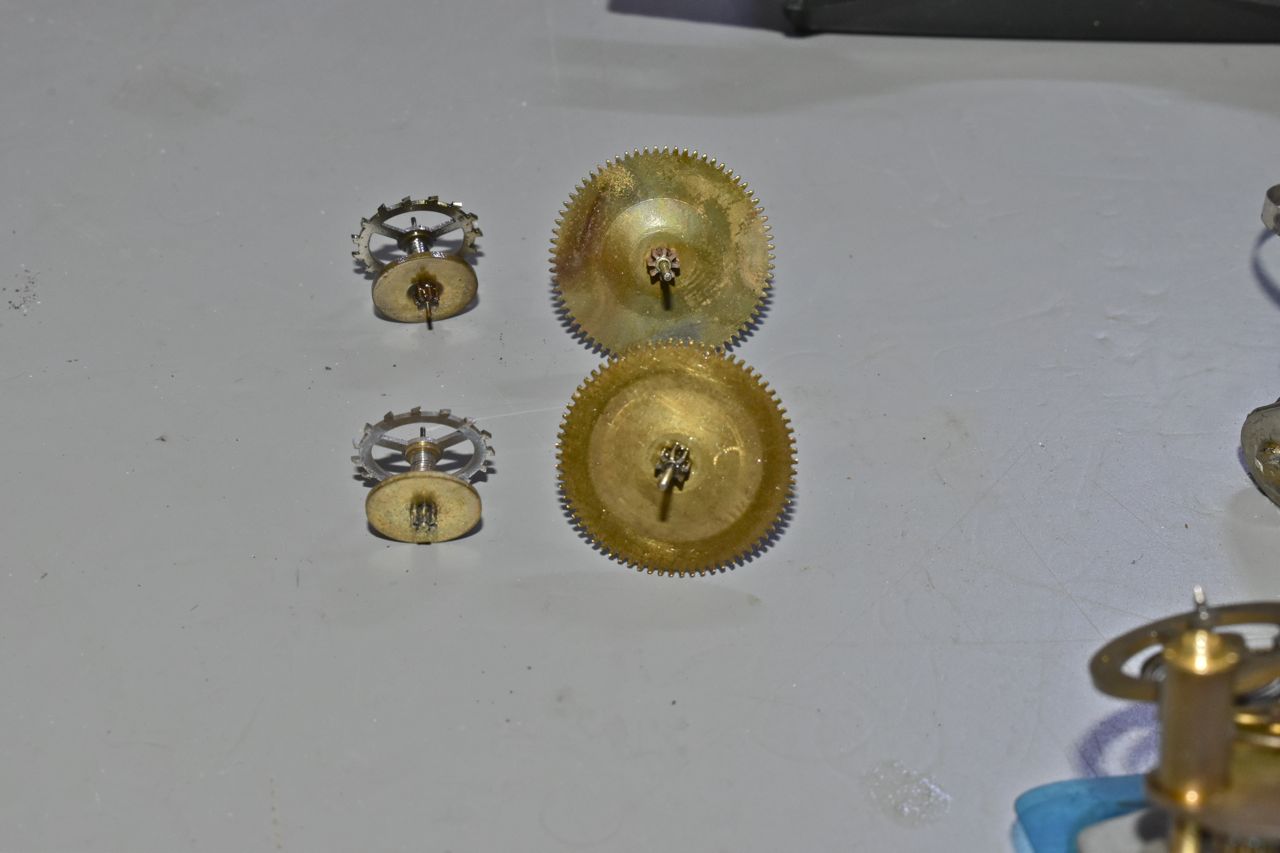
Times like this you need another parts clock. I have collected several of these.
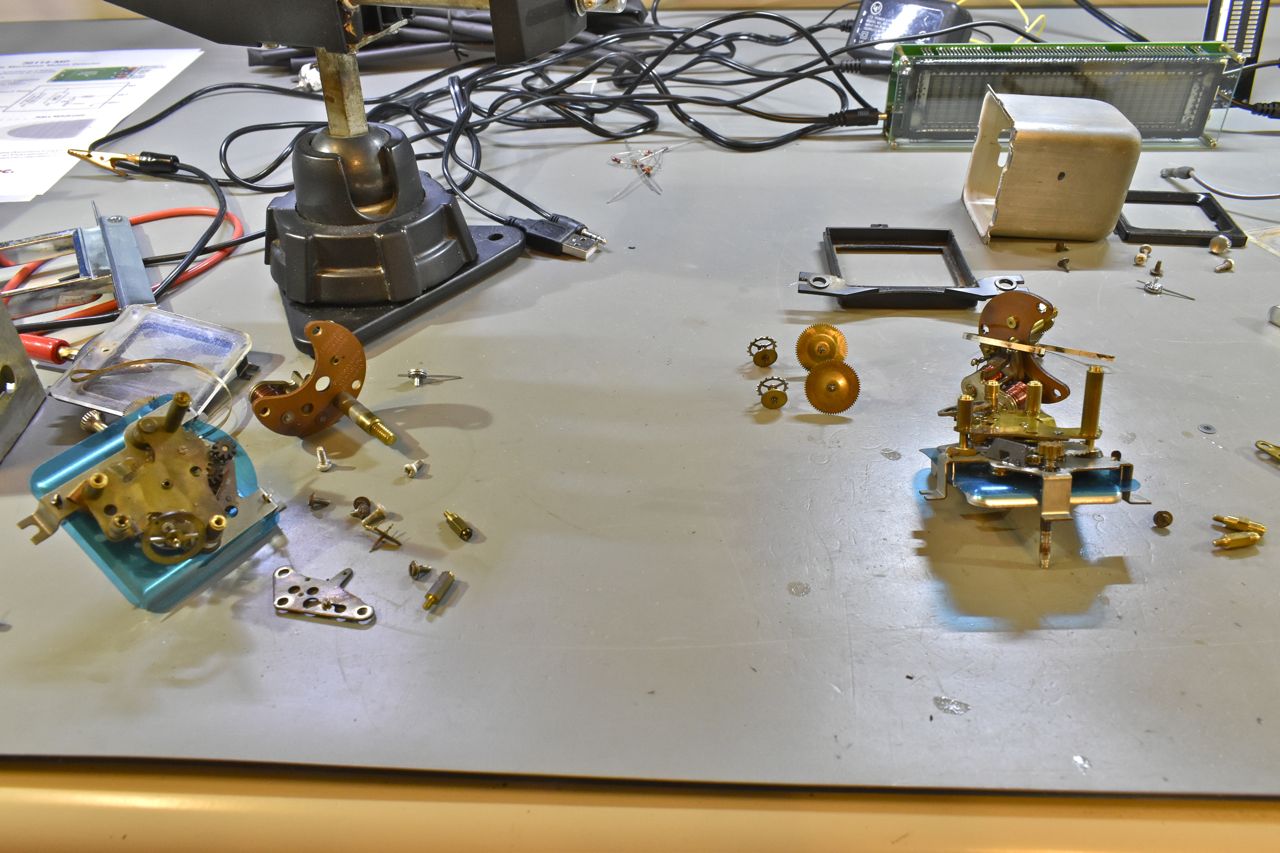
You can tell the suns been at the minuted hand and somewhat the hour hand as they are faded.
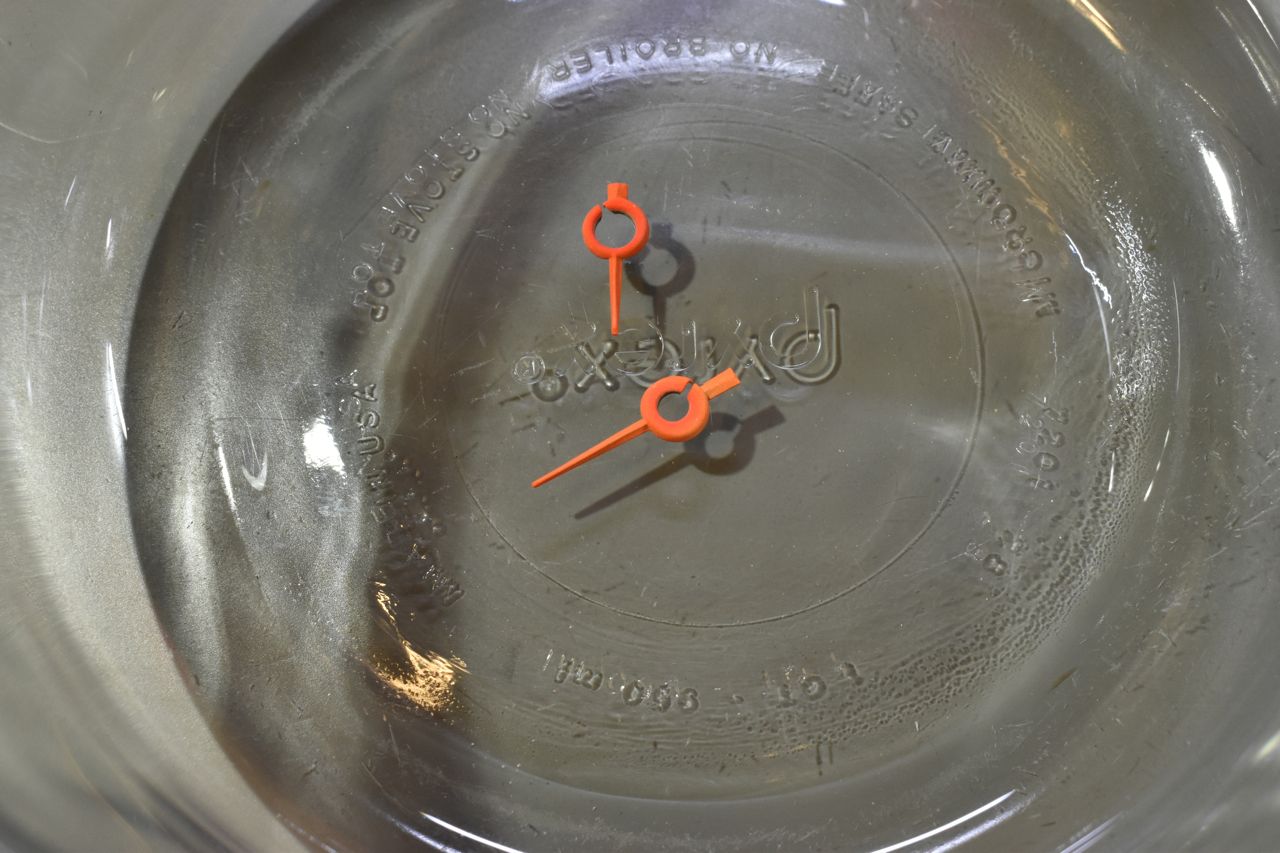
No problem

Easy to paint in the bowl, some lacquer thinner cleans the paint right off the glass.
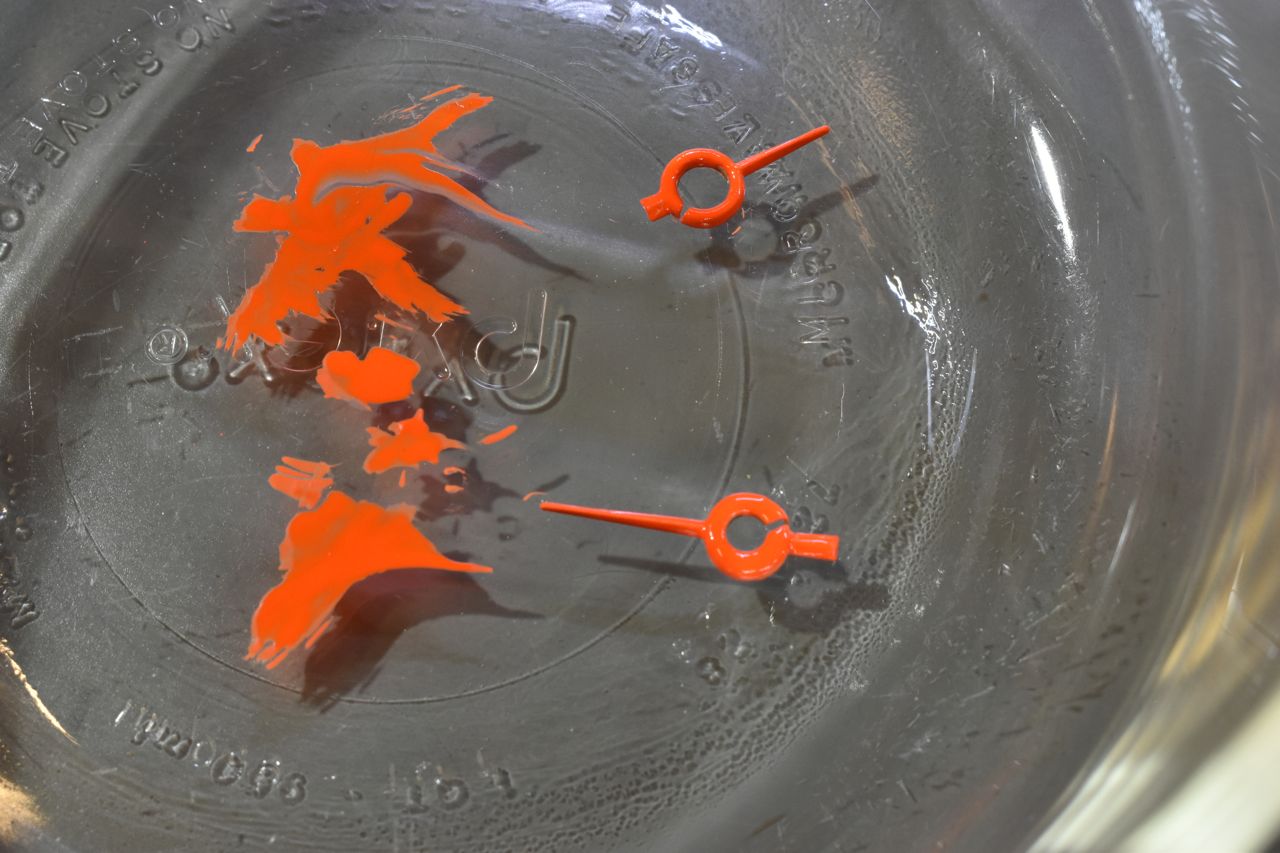
I've covered this in greater detail on my other posts on the 66 gal 500 XL and the 66 LTD posts I have but I build the point contacts back up with silver solder and file flat best as I can.

Same with this side.

The points set that make contact to auto wind.

The reason why the points arc so badly is the inductive flywheel effect when the high current is interrupted. It creates an arc that blows ions off the points and coats the gear set eventually. One way to stop that is solder on a high speed diode across the coil. That way it drastically reduces arcing and makes the points last much much longer.

That's where it needs to be connected. Now soldering on that big brass lug takes a lot of heat and that diode is going to get too hot trying to solder so once it's soldered, take a can of air duster, invert it to get liquid refrigerant out and let it dribble on the stud to cool it quickly as possible so the diode doesn't over heat.
